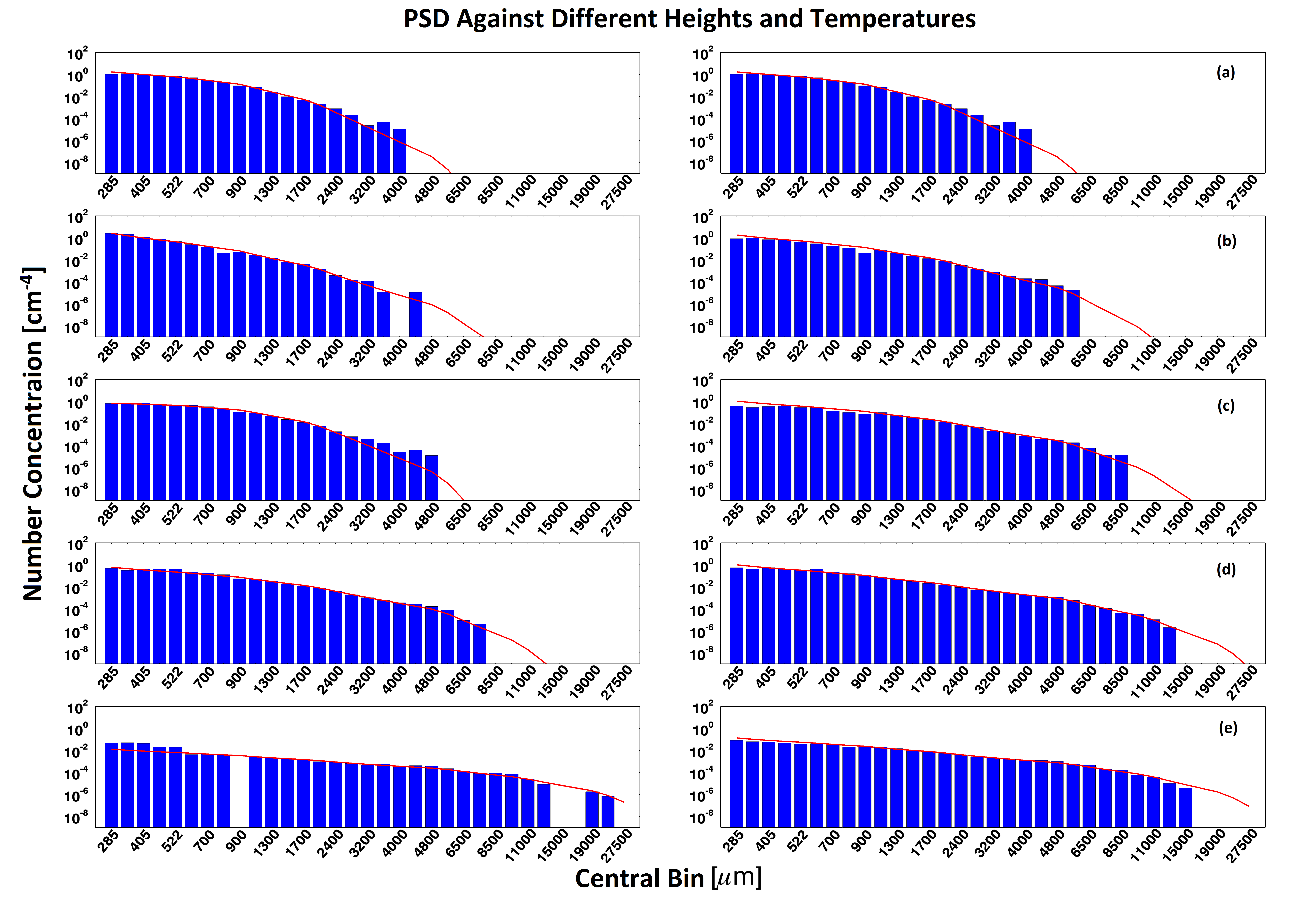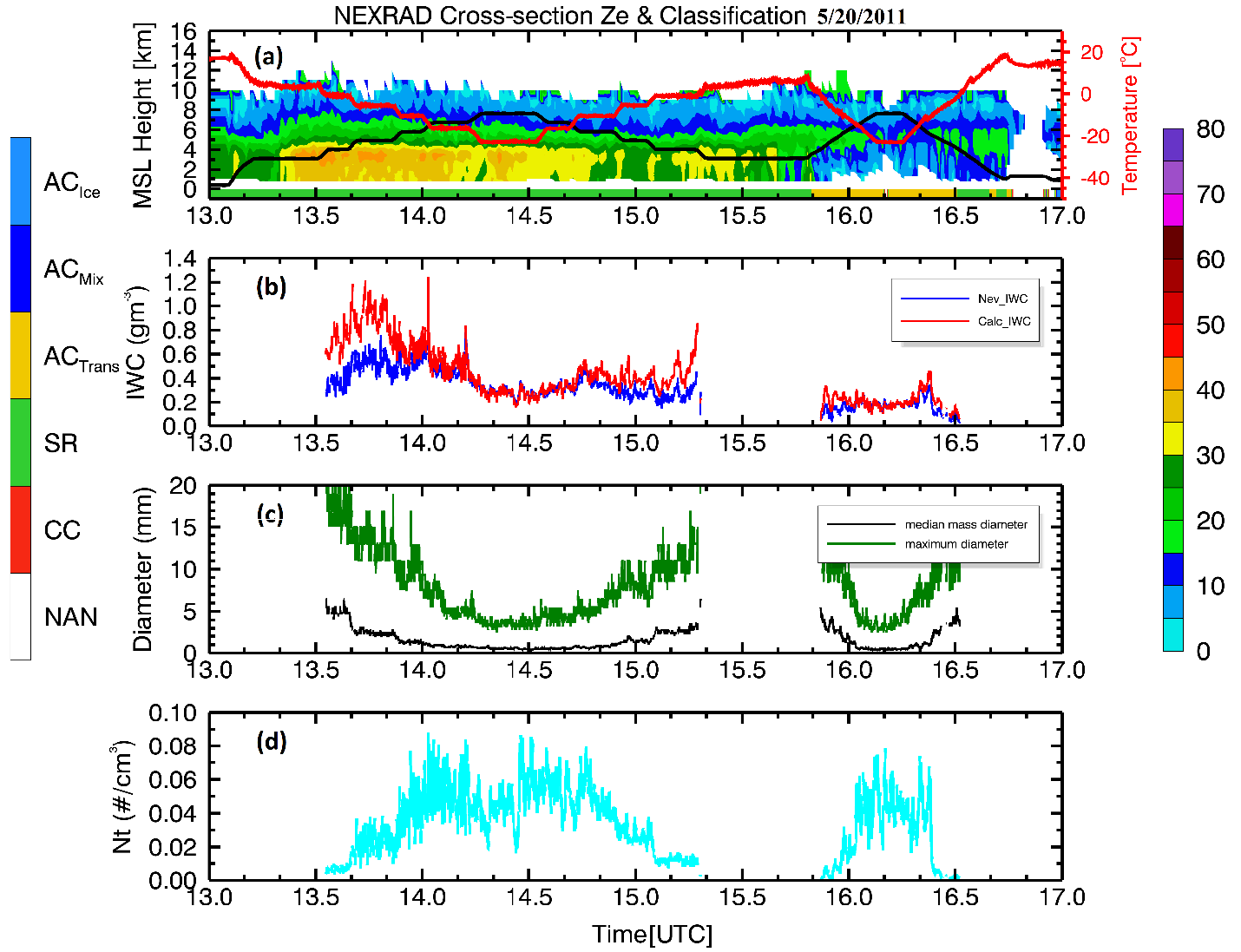DCS Ice Cloud Microphysical Properties Derived from Aircraft Data during MC3E
Submitter:
Dong, Xiquan — University of Arizona
Area of research:
Cloud Processes
Journal Reference:
Science
Particle size distributions (PSDs) play an important role in the study of ice clouds because most of bulk ice cloud microphysical properties, including ice water contents (IWC), bulk density, median mass diameter (Dm), etc., are determined from the PSD measurements. Furthermore, the PSD should have a strong relationship to ice formation and growth processes, including aggregation, accretion, deposition, melting, and autoconversion of droplets to raindrop sizes. In this study, the gamma-type-size distributions have been generated matching the observed 5 s averaged PSDs during MC3E, which can be applied by the remote sensing and modeling community to retrieve or simulate bulk ice cloud microphysical properties of the deep convective systems (DCSs).
Impact
Six DCSs, with a total of 5589 five-second samples and a range of temperatures from -41°C to 0°C during MC3E, were selected to investigate the ice cloud microphysical properties of DCSs over the DOE ARM Southern Great Plains site. The ice cloud measurements of the DCS cases were made by the University of North Dakota Citation II research aircraft, and the ice cloud properties were derived through the following processes. First, the instances of supercooled liquid water in the ice-dominated cloud layers of DCSs have been eliminated using multisensor detection, including the Rosemount Icing Detector, King and Cloud Droplet Probes, as well as 2DC and Cloud Imaging Probe images. Then the Nevzorov- measured IWCs at maximum diameter Dmax<4000 μm are used as the best estimation to determine a new mass-dimensional relationship. Finally, the newly derived mass-dimensional relationship (a = 0.00365, b = 2.1) has been applied to a full spectrum of PSDs, 120–30,000 μm) constructed from both 2DC and High-Volume Precipitation Spectrometer measurements (Figure 1) to calculate the best-estimated IWCs (Figure 2b, red line) of DCSs during MC3E.
Summary
The averages of the total number concentrations (Nt), median mass diameter (Dm), maximum diameter (Dmax), and IWC from six selected cases are 0.035cm-3, 1666 μm, 8841 μm, and 0.45 gm-3, respectively. The gamma-type-size distributions are then generated matching the observed PSDs (120–30,000 μm), and the fitted gamma parameters are compared with the observed PSDs through multimoment assessments including first moment (Dm), third moment (IWC), and sixth moment (equivalent radar reflectivity, Ze). For application of observed PSDs to the remote sensing community, a series of empirical relationships between fitted parameters and Ze values has been derived, and the bullet rosette ice crystal backscattering relationship has been suggested for ground-based remote sensing.



